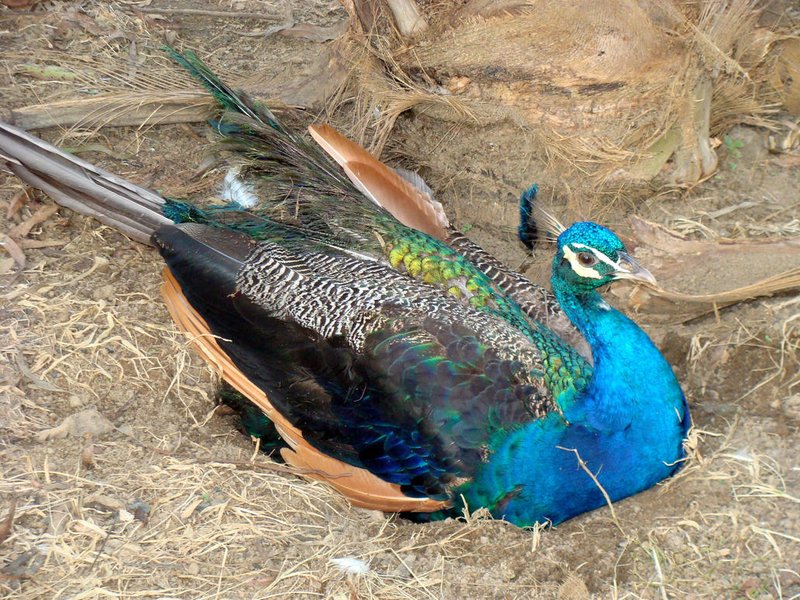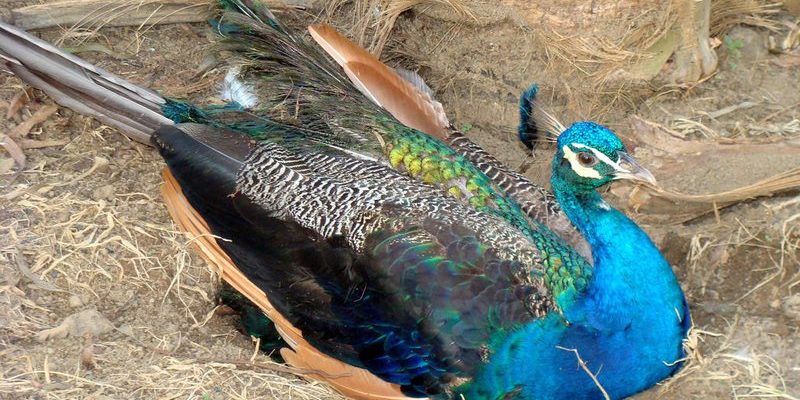
When peacocks are in their element, strutting their stuff, they’re not just showing off for fun. Their behaviors, especially during nesting season, are part of a complex process aimed at ensuring the survival of their species. So, let’s take a closer look at these extraordinary birds and uncover the mysteries of their nesting habits and lifecycle.
Nesting Habits of Peacocks
Peacocks, which are the males of the species, share nesting responsibilities with peahens, the females. While peacocks may dazzle with their feathers, the real work of building a nest often falls to the peahens. They typically prefer to nest on the ground, choosing hidden spots within tall grasses or dense underbrush. This strategic choice provides some protection against predators.
When a peahen is ready to nest, she looks for a safe and sheltered area where she can lay her eggs. The nesting site is often near water, since peafowl enjoy the presence of water bodies. You might be wondering about the actual nest structure. It’s usually quite simple, made up of a shallow scrape in the ground lined with a few leaves or twigs. Talk about minimalism!
Once the peahen picks her spot, she lays her eggs—usually between 3 to 6 eggs at a time. These eggs are a pale cream color, almost blending in with the surrounding soil. It’s like nature’s way of providing camouflage. The peahen will sit on the eggs for about 28 days before they hatch, and during this time, she’s very protective, often puffing up her feathers as a warning to potential intruders.
Peacock Parenting: Protecting the Young
Once the eggs hatch, the newly hatched chicks, known as peachicks, are surprisingly mobile. They can walk and follow their mother almost immediately. This is crucial since they need to stay close to her for protection and warmth. It’s as if they’re born ready to take on the world, albeit with a bit of guidance from mom.
Here’s the thing: peahens take on the role of the primary caregiver. They lead their peachicks to food and water, teaching them essential survival skills. This could involve pecking at the ground to uncover seeds or insects, which are vital for the growing chicks. Imagine a mother teaching her kids how to navigate the local grocery store—it’s a lot like that!
Despite their strong instincts, peachicks still face challenges. Predators like snakes, foxes, and birds of prey are always lurking nearby. As a result, peahens are vigilant, constantly keeping an eye on their young. If danger approaches, they’ll often use alarm calls to alert their chicks to take cover. It’s a delicate balancing act between nurturing and protecting.
The Growth Stages of Peacocks
Peacocks undergo several growth stages before fully maturing into the stunning adults we admire. After hatching, peachicks grow rapidly. Within the first few weeks, their downy feathers transform into juvenile plumage, which, while not as flashy as adult feathers, is still quite beautiful.
Around six months of age, the young males begin to show signs of their vibrant plumage. They’ll sport a mix of iridescent feathers but won’t have the full tail feathers until they reach about three years old. It’s like waiting for a caterpillar to become a butterfly—there’s a lot of transformation happening beneath the surface.
During the growing phase, diet plays a critical role. Peachicks require a balanced diet rich in protein and nutrients to support their development. This includes seeds, insects, and even small reptiles. If you were a peachick, think of it as being treated to a delightful buffet every day!
Rituals of Mating Season
As peacocks mature, they start to participate in fascinating courtship rituals. Male peacocks are known for their elaborate displays, where they fan out their stunning tail feathers to attract a mate. This usually happens during the mating season, which typically occurs from late spring to early summer.
The display is not just for show; it’s a rather serious business. Peahens carefully observe the males, selecting partners based on the size, color, and pattern of their tail feathers. It’s like a bird version of “The Bachelor,” where charm and looks matter a whole lot! Sometimes, male peacocks will even engage in play-fighting to establish dominance and impress the females.
Once a peahen picks her mate, the two will bond for the breeding season. After mating, the female will then find a safe nesting site to lay her eggs, starting the cycle all over again. It’s quite a captivating process that showcases the beauty of nature!
Challenges in the Lifecycle of Peacocks
Even though peacocks are stunning and seem to glide through life with ease, they face various challenges along their journey. Habitat loss due to urban development and deforestation is a significant issue. As their natural habitats shrink, so do their chances of survival. It’s like trying to play a game of hide-and-seek in a shrinking playground—harder than it sounds!
In addition to habitat loss, these birds are often hunted for their striking feathers. While peacocks are protected by laws in many regions, poaching and illegal trade still pose threats to their populations. Conservation efforts are crucial to ensure that future generations can enjoy the sight of these majestic creatures strutting their stuff.
Furthermore, climate change is beginning to affect their habitats. Changes in temperature and precipitation patterns can impact their nesting seasons and food availability. It’s a tough world out there, and peacocks, like many animals, must adapt if they want to survive.
Peacocks are more than just beautiful birds; they have a complex lifecycle filled with fascinating behaviors and challenges. From their meticulous nesting habits to their stunning courtship displays, there’s so much more to these birds than meets the eye. Learning about them helps us appreciate not just their beauty, but the importance of protecting their habitats and ensuring their survival.
So next time you see a peacock, remember the journey that bird has taken—from a tiny peachick learning to navigate its world, to a majestic adult flaunting its feathers. It reminds us that every creature plays a role in the grand tapestry of life, and every effort towards conservation counts.

